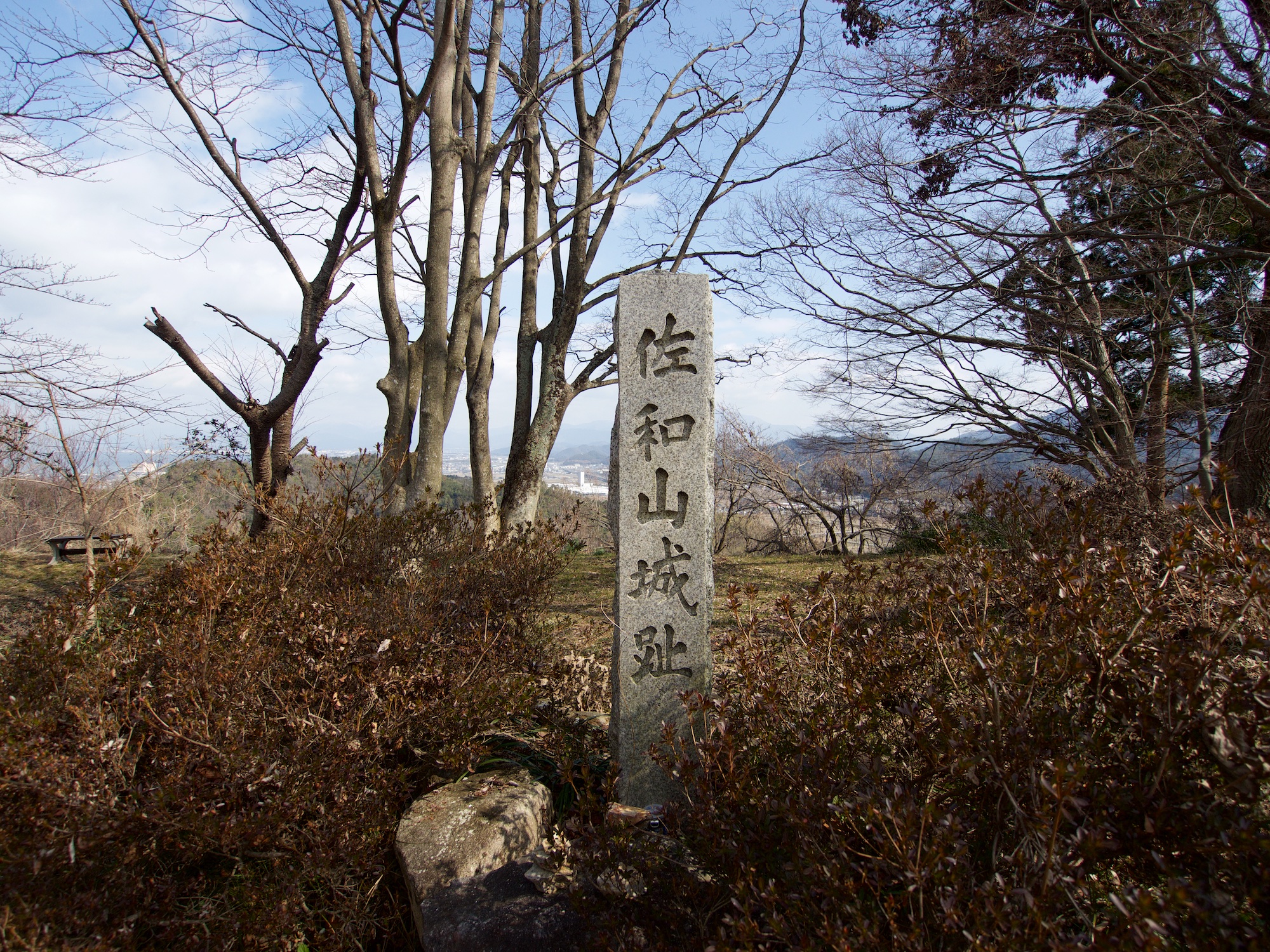Loading map...
{"format":"leaflet","minzoom":false,"maxzoom":false,"limit":500,"offset":0,"link":"all","sort":["order"],"order":[],"headers":"show","mainlabel":"","intro":"","outro":"","searchlabel":"... further results","default":"","import-annotation":false,"width":"auto","height":"350px","centre":false,"title":"","label":"","icon":"Darkred18.png","lines":[],"polygons":[],"circles":[],"rectangles":[],"copycoords":false,"static":false,"zoom":false,"defzoom":14,"layers":["Esri.WorldTopoMap"],"image layers":[],"overlays":[],"resizable":false,"fullscreen":false,"scrollwheelzoom":true,"cluster":false,"clustermaxzoom":20,"clusterzoomonclick":true,"clustermaxradius":80,"clusterspiderfy":true,"geojson":"","clicktarget":"","showtitle":false,"hidenamespace":true,"template":"InfoWindowProfile","userparam":"","activeicon":"","pagelabel":false,"ajaxcoordproperty":"","ajaxquery":"","locations":[{"text":"\u003Cdiv style=\"width:150px\"\u003E\n\u003Cp\u003E\u003Ca href=\"/view/File:Sawayama18.jpg\" class=\"image\"\u003E\u003Cimg alt=\"Sawayama18.jpg\" src=\"../images/thumb/b/bf/Sawayama18.jpg/125px-Sawayama18.jpg\" decoding=\"async\" width=\"125\" height=\"94\" srcset=\"../images/thumb/b/bf/Sawayama18.jpg/188px-Sawayama18.jpg 1.5x, ../images/thumb/b/bf/Sawayama18.jpg/250px-Sawayama18.jpg 2x\" /\u003E\u003C/a\u003E\n\u003C/p\u003E\n\u003C/div\u003E","title":"","link":"","lat":35.27982,"lon":136.26899,"icon":"../images/0/06/Darkred18.png"},{"text":"\u003Cdiv style=\"width:150px\"\u003E\n\u003Cp\u003E\u003Ca href=\"/view/File:Sawayama27.jpg\" class=\"image\"\u003E\u003Cimg alt=\"Sawayama27.jpg\" src=\"../images/thumb/e/e1/Sawayama27.jpg/125px-Sawayama27.jpg\" decoding=\"async\" width=\"125\" height=\"94\" srcset=\"../images/thumb/e/e1/Sawayama27.jpg/188px-Sawayama27.jpg 1.5x, ../images/thumb/e/e1/Sawayama27.jpg/250px-Sawayama27.jpg 2x\" /\u003E\u003C/a\u003E\n\u003C/p\u003E\n\u003C/div\u003E","title":"","link":"","lat":35.27949,"lon":136.26998,"icon":"../images/0/06/Darkred18.png"},{"text":"\u003Cdiv style=\"width:150px\"\u003E\n\u003Cp\u003E\u003Ca href=\"/view/File:Sawayama1.jpg\" class=\"image\"\u003E\u003Cimg alt=\"Sawayama1.jpg\" src=\"../images/thumb/6/61/Sawayama1.jpg/125px-Sawayama1.jpg\" decoding=\"async\" width=\"125\" height=\"94\" srcset=\"../images/thumb/6/61/Sawayama1.jpg/188px-Sawayama1.jpg 1.5x, ../images/thumb/6/61/Sawayama1.jpg/250px-Sawayama1.jpg 2x\" /\u003E\u003C/a\u003E\n\u003C/p\u003E\n\u003C/div\u003E","title":"","link":"","lat":35.28262,"lon":136.26519,"icon":"../images/0/06/Darkred18.png"},{"text":"\u003Cdiv style=\"width:150px\"\u003E\n\u003Cp\u003E\u003Ca href=\"/view/File:Sawayama39.jpg\" class=\"image\"\u003E\u003Cimg alt=\"Sawayama39.jpg\" src=\"../images/thumb/5/57/Sawayama39.jpg/125px-Sawayama39.jpg\" decoding=\"async\" width=\"125\" height=\"94\" srcset=\"../images/thumb/5/57/Sawayama39.jpg/188px-Sawayama39.jpg 1.5x, ../images/thumb/5/57/Sawayama39.jpg/250px-Sawayama39.jpg 2x\" /\u003E\u003C/a\u003E\n\u003C/p\u003E\n\u003C/div\u003E","title":"","link":"","lat":35.28264,"lon":136.26487,"icon":"../images/0/06/Darkred18.png"},{"text":"\u003Cdiv style=\"width:150px\"\u003E\n\u003Cp\u003E\u003Ca href=\"/view/File:Sawayama2.jpg\" class=\"image\"\u003E\u003Cimg alt=\"Sawayama2.jpg\" src=\"../images/thumb/2/2d/Sawayama2.jpg/125px-Sawayama2.jpg\" decoding=\"async\" width=\"125\" height=\"94\" srcset=\"../images/thumb/2/2d/Sawayama2.jpg/188px-Sawayama2.jpg 1.5x, ../images/thumb/2/2d/Sawayama2.jpg/250px-Sawayama2.jpg 2x\" /\u003E\u003C/a\u003E\n\u003C/p\u003E\n\u003C/div\u003E","title":"","link":"","lat":35.28176,"lon":136.26814,"icon":"../images/0/06/Darkred18.png"},{"text":"\u003Cdiv style=\"width:150px\"\u003E\n\u003Cp\u003E\u003Ca href=\"/view/File:Sawayama3.jpg\" class=\"image\"\u003E\u003Cimg alt=\"Sawayama3.jpg\" src=\"../images/thumb/d/db/Sawayama3.jpg/125px-Sawayama3.jpg\" decoding=\"async\" width=\"125\" height=\"94\" srcset=\"../images/thumb/d/db/Sawayama3.jpg/188px-Sawayama3.jpg 1.5x, ../images/thumb/d/db/Sawayama3.jpg/250px-Sawayama3.jpg 2x\" /\u003E\u003C/a\u003E\n\u003C/p\u003E\n\u003C/div\u003E","title":"","link":"","lat":35.28186,"lon":136.26884,"icon":"../images/0/06/Darkred18.png"},{"text":"\u003Cdiv style=\"width:150px\"\u003E\n\u003Cp\u003E\u003Ca href=\"/view/File:Sawayama4.jpg\" class=\"image\"\u003E\u003Cimg alt=\"Sawayama4.jpg\" src=\"../images/thumb/5/58/Sawayama4.jpg/125px-Sawayama4.jpg\" decoding=\"async\" width=\"125\" height=\"94\" srcset=\"../images/thumb/5/58/Sawayama4.jpg/188px-Sawayama4.jpg 1.5x, ../images/thumb/5/58/Sawayama4.jpg/250px-Sawayama4.jpg 2x\" /\u003E\u003C/a\u003E\n\u003C/p\u003E\n\u003C/div\u003E","title":"","link":"","lat":35.28133,"lon":136.2691,"icon":"../images/0/06/Darkred18.png"},{"text":"\u003Cdiv style=\"width:150px\"\u003E\n\u003Cp\u003E\u003Ca href=\"/view/File:Sawayama5.jpg\" class=\"image\"\u003E\u003Cimg alt=\"Sawayama5.jpg\" src=\"../images/thumb/d/da/Sawayama5.jpg/125px-Sawayama5.jpg\" decoding=\"async\" width=\"125\" height=\"94\" srcset=\"../images/thumb/d/da/Sawayama5.jpg/188px-Sawayama5.jpg 1.5x, ../images/thumb/d/da/Sawayama5.jpg/250px-Sawayama5.jpg 2x\" /\u003E\u003C/a\u003E\n\u003C/p\u003E\n\u003C/div\u003E","title":"","link":"","lat":35.28131,"lon":136.26926,"icon":"../images/0/06/Darkred18.png"},{"text":"\u003Cdiv style=\"width:150px\"\u003E\n\u003Cp\u003E\u003Ca href=\"/view/File:Sawayama6.jpg\" class=\"image\"\u003E\u003Cimg alt=\"Sawayama6.jpg\" src=\"../images/thumb/a/a5/Sawayama6.jpg/125px-Sawayama6.jpg\" decoding=\"async\" width=\"125\" height=\"94\" srcset=\"../images/thumb/a/a5/Sawayama6.jpg/188px-Sawayama6.jpg 1.5x, ../images/thumb/a/a5/Sawayama6.jpg/250px-Sawayama6.jpg 2x\" /\u003E\u003C/a\u003E\n\u003C/p\u003E\n\u003C/div\u003E","title":"","link":"","lat":35.28134,"lon":136.26919,"icon":"../images/0/06/Darkred18.png"},{"text":"\u003Cdiv style=\"width:150px\"\u003E\n\u003Cp\u003E\u003Ca href=\"/view/File:Sawayama7.jpg\" class=\"image\"\u003E\u003Cimg alt=\"Sawayama7.jpg\" src=\"../images/thumb/9/96/Sawayama7.jpg/125px-Sawayama7.jpg\" decoding=\"async\" width=\"125\" height=\"94\" srcset=\"../images/thumb/9/96/Sawayama7.jpg/188px-Sawayama7.jpg 1.5x, ../images/thumb/9/96/Sawayama7.jpg/250px-Sawayama7.jpg 2x\" /\u003E\u003C/a\u003E\n\u003C/p\u003E\n\u003C/div\u003E","title":"","link":"","lat":35.28088,"lon":136.26884,"icon":"../images/0/06/Darkred18.png"},{"text":"\u003Cdiv style=\"width:150px\"\u003E\n\u003Cp\u003E\u003Ca href=\"/view/File:Sawayama8.jpg\" class=\"image\"\u003E\u003Cimg alt=\"Sawayama8.jpg\" src=\"../images/thumb/d/da/Sawayama8.jpg/125px-Sawayama8.jpg\" decoding=\"async\" width=\"125\" height=\"94\" srcset=\"../images/thumb/d/da/Sawayama8.jpg/188px-Sawayama8.jpg 1.5x, ../images/thumb/d/da/Sawayama8.jpg/250px-Sawayama8.jpg 2x\" /\u003E\u003C/a\u003E\n\u003C/p\u003E\n\u003C/div\u003E","title":"","link":"","lat":35.28079,"lon":136.26884,"icon":"../images/0/06/Darkred18.png"},{"text":"\u003Cdiv style=\"width:150px\"\u003E\n\u003Cp\u003E\u003Ca href=\"/view/File:Sawayama9.jpg\" class=\"image\"\u003E\u003Cimg alt=\"Sawayama9.jpg\" src=\"../images/thumb/d/d0/Sawayama9.jpg/125px-Sawayama9.jpg\" decoding=\"async\" width=\"125\" height=\"94\" srcset=\"../images/thumb/d/d0/Sawayama9.jpg/188px-Sawayama9.jpg 1.5x, ../images/thumb/d/d0/Sawayama9.jpg/250px-Sawayama9.jpg 2x\" /\u003E\u003C/a\u003E\n\u003C/p\u003E\n\u003C/div\u003E","title":"","link":"","lat":35.28051,"lon":136.26879,"icon":"../images/0/06/Darkred18.png"},{"text":"\u003Cdiv style=\"width:150px\"\u003E\n\u003Cp\u003E\u003Ca href=\"/view/File:Sawayama10.jpg\" class=\"image\"\u003E\u003Cimg alt=\"Sawayama10.jpg\" src=\"../images/thumb/f/fd/Sawayama10.jpg/125px-Sawayama10.jpg\" decoding=\"async\" width=\"125\" height=\"94\" srcset=\"../images/thumb/f/fd/Sawayama10.jpg/188px-Sawayama10.jpg 1.5x, ../images/thumb/f/fd/Sawayama10.jpg/250px-Sawayama10.jpg 2x\" /\u003E\u003C/a\u003E\n\u003C/p\u003E\n\u003C/div\u003E","title":"","link":"","lat":35.28,"lon":136.26893,"icon":"../images/0/06/Darkred18.png"},{"text":"\u003Cdiv style=\"width:150px\"\u003E\n\u003Cp\u003E\u003Ca href=\"/view/File:Sawayama11.jpg\" class=\"image\"\u003E\u003Cimg alt=\"Sawayama11.jpg\" src=\"../images/thumb/a/ae/Sawayama11.jpg/125px-Sawayama11.jpg\" decoding=\"async\" width=\"125\" height=\"94\" srcset=\"../images/thumb/a/ae/Sawayama11.jpg/188px-Sawayama11.jpg 1.5x, ../images/thumb/a/ae/Sawayama11.jpg/250px-Sawayama11.jpg 2x\" /\u003E\u003C/a\u003E\n\u003C/p\u003E\n\u003C/div\u003E","title":"","link":"","lat":35.27999,"lon":136.26888,"icon":"../images/0/06/Darkred18.png"},{"text":"\u003Cdiv style=\"width:150px\"\u003E\n\u003Cp\u003E\u003Ca href=\"/view/File:Sawayama12.jpg\" class=\"image\"\u003E\u003Cimg alt=\"Sawayama12.jpg\" src=\"../images/thumb/e/e0/Sawayama12.jpg/125px-Sawayama12.jpg\" decoding=\"async\" width=\"125\" height=\"94\" srcset=\"../images/thumb/e/e0/Sawayama12.jpg/188px-Sawayama12.jpg 1.5x, ../images/thumb/e/e0/Sawayama12.jpg/250px-Sawayama12.jpg 2x\" /\u003E\u003C/a\u003E\n\u003C/p\u003E\n\u003C/div\u003E","title":"","link":"","lat":35.28001,"lon":136.26891,"icon":"../images/0/06/Darkred18.png"},{"text":"\u003Cdiv style=\"width:150px\"\u003E\n\u003Cp\u003E\u003Ca href=\"/view/File:Sawayama13.jpg\" class=\"image\"\u003E\u003Cimg alt=\"Sawayama13.jpg\" src=\"../images/thumb/b/b0/Sawayama13.jpg/125px-Sawayama13.jpg\" decoding=\"async\" width=\"125\" height=\"94\" srcset=\"../images/thumb/b/b0/Sawayama13.jpg/188px-Sawayama13.jpg 1.5x, ../images/thumb/b/b0/Sawayama13.jpg/250px-Sawayama13.jpg 2x\" /\u003E\u003C/a\u003E\n\u003C/p\u003E\n\u003C/div\u003E","title":"","link":"","lat":35.27992,"lon":136.26896,"icon":"../images/0/06/Darkred18.png"},{"text":"\u003Cdiv style=\"width:150px\"\u003E\n\u003Cp\u003E\u003Ca href=\"/view/File:Sawayama14.jpg\" class=\"image\"\u003E\u003Cimg alt=\"Sawayama14.jpg\" src=\"../images/thumb/1/15/Sawayama14.jpg/125px-Sawayama14.jpg\" decoding=\"async\" width=\"125\" height=\"94\" srcset=\"../images/thumb/1/15/Sawayama14.jpg/188px-Sawayama14.jpg 1.5x, ../images/thumb/1/15/Sawayama14.jpg/250px-Sawayama14.jpg 2x\" /\u003E\u003C/a\u003E\n\u003C/p\u003E\n\u003C/div\u003E","title":"","link":"","lat":35.27981,"lon":136.26904,"icon":"../images/0/06/Darkred18.png"},{"text":"\u003Cdiv style=\"width:150px\"\u003E\n\u003Cp\u003E\u003Ca href=\"/view/File:Sawayama15.jpg\" class=\"image\"\u003E\u003Cimg alt=\"Sawayama15.jpg\" src=\"../images/thumb/1/13/Sawayama15.jpg/125px-Sawayama15.jpg\" decoding=\"async\" width=\"125\" height=\"94\" srcset=\"../images/thumb/1/13/Sawayama15.jpg/188px-Sawayama15.jpg 1.5x, ../images/thumb/1/13/Sawayama15.jpg/250px-Sawayama15.jpg 2x\" /\u003E\u003C/a\u003E\n\u003C/p\u003E\n\u003C/div\u003E","title":"","link":"","lat":35.27977,"lon":136.26889,"icon":"../images/0/06/Darkred18.png"},{"text":"\u003Cdiv style=\"width:150px\"\u003E\n\u003Cp\u003E\u003Ca href=\"/view/File:Sawayama16.jpg\" class=\"image\"\u003E\u003Cimg alt=\"Sawayama16.jpg\" src=\"../images/thumb/b/bc/Sawayama16.jpg/125px-Sawayama16.jpg\" decoding=\"async\" width=\"125\" height=\"94\" srcset=\"../images/thumb/b/bc/Sawayama16.jpg/188px-Sawayama16.jpg 1.5x, ../images/thumb/b/bc/Sawayama16.jpg/250px-Sawayama16.jpg 2x\" /\u003E\u003C/a\u003E\n\u003C/p\u003E\n\u003C/div\u003E","title":"","link":"","lat":35.27978,"lon":136.26892,"icon":"../images/0/06/Darkred18.png"},{"text":"\u003Cdiv style=\"width:150px\"\u003E\n\u003Cp\u003E\u003Ca href=\"/view/File:Sawayama17.jpg\" class=\"image\"\u003E\u003Cimg alt=\"Sawayama17.jpg\" src=\"../images/thumb/2/22/Sawayama17.jpg/125px-Sawayama17.jpg\" decoding=\"async\" width=\"125\" height=\"94\" srcset=\"../images/thumb/2/22/Sawayama17.jpg/188px-Sawayama17.jpg 1.5x, ../images/thumb/2/22/Sawayama17.jpg/250px-Sawayama17.jpg 2x\" /\u003E\u003C/a\u003E\n\u003C/p\u003E\n\u003C/div\u003E","title":"","link":"","lat":35.27979,"lon":136.26893,"icon":"../images/0/06/Darkred18.png"},{"text":"\u003Cdiv style=\"width:150px\"\u003E\n\u003Cp\u003E\u003Ca href=\"/view/File:Sawayama19.jpg\" class=\"image\"\u003E\u003Cimg alt=\"Sawayama19.jpg\" src=\"../images/thumb/8/80/Sawayama19.jpg/125px-Sawayama19.jpg\" decoding=\"async\" width=\"125\" height=\"94\" srcset=\"../images/thumb/8/80/Sawayama19.jpg/188px-Sawayama19.jpg 1.5x, ../images/thumb/8/80/Sawayama19.jpg/250px-Sawayama19.jpg 2x\" /\u003E\u003C/a\u003E\n\u003C/p\u003E\n\u003C/div\u003E","title":"","link":"","lat":35.27985,"lon":136.26894,"icon":"../images/0/06/Darkred18.png"},{"text":"\u003Cdiv style=\"width:150px\"\u003E\n\u003Cp\u003E\u003Ca href=\"/view/File:Sawayama20.jpg\" class=\"image\"\u003E\u003Cimg alt=\"Sawayama20.jpg\" src=\"../images/thumb/b/ba/Sawayama20.jpg/125px-Sawayama20.jpg\" decoding=\"async\" width=\"125\" height=\"94\" srcset=\"../images/thumb/b/ba/Sawayama20.jpg/188px-Sawayama20.jpg 1.5x, ../images/thumb/b/ba/Sawayama20.jpg/250px-Sawayama20.jpg 2x\" /\u003E\u003C/a\u003E\n\u003C/p\u003E\n\u003C/div\u003E","title":"","link":"","lat":35.27986,"lon":136.26894,"icon":"../images/0/06/Darkred18.png"},{"text":"\u003Cdiv style=\"width:150px\"\u003E\n\u003Cp\u003E\u003Ca href=\"/view/File:Sawayama21.jpg\" class=\"image\"\u003E\u003Cimg alt=\"Sawayama21.jpg\" src=\"../images/thumb/8/8b/Sawayama21.jpg/125px-Sawayama21.jpg\" decoding=\"async\" width=\"125\" height=\"94\" srcset=\"../images/thumb/8/8b/Sawayama21.jpg/188px-Sawayama21.jpg 1.5x, ../images/thumb/8/8b/Sawayama21.jpg/250px-Sawayama21.jpg 2x\" /\u003E\u003C/a\u003E\n\u003C/p\u003E\n\u003C/div\u003E","title":"","link":"","lat":35.27979,"lon":136.26905,"icon":"../images/0/06/Darkred18.png"},{"text":"\u003Cdiv style=\"width:150px\"\u003E\n\u003Cp\u003E\u003Ca href=\"/view/File:Sawayama22.jpg\" class=\"image\"\u003E\u003Cimg alt=\"Sawayama22.jpg\" src=\"../images/thumb/6/63/Sawayama22.jpg/125px-Sawayama22.jpg\" decoding=\"async\" width=\"125\" height=\"94\" srcset=\"../images/thumb/6/63/Sawayama22.jpg/188px-Sawayama22.jpg 1.5x, ../images/thumb/6/63/Sawayama22.jpg/250px-Sawayama22.jpg 2x\" /\u003E\u003C/a\u003E\n\u003C/p\u003E\n\u003C/div\u003E","title":"","link":"","lat":35.27966,"lon":136.26915,"icon":"../images/0/06/Darkred18.png"},{"text":"\u003Cdiv style=\"width:150px\"\u003E\n\u003Cp\u003E\u003Ca href=\"/view/File:Sawayama23.jpg\" class=\"image\"\u003E\u003Cimg alt=\"Sawayama23.jpg\" src=\"../images/thumb/2/2f/Sawayama23.jpg/125px-Sawayama23.jpg\" decoding=\"async\" width=\"125\" height=\"94\" srcset=\"../images/thumb/2/2f/Sawayama23.jpg/188px-Sawayama23.jpg 1.5x, ../images/thumb/2/2f/Sawayama23.jpg/250px-Sawayama23.jpg 2x\" /\u003E\u003C/a\u003E\n\u003C/p\u003E\n\u003C/div\u003E","title":"","link":"","lat":35.27962,"lon":136.26926,"icon":"../images/0/06/Darkred18.png"},{"text":"\u003Cdiv style=\"width:150px\"\u003E\n\u003Cp\u003E\u003Ca href=\"/view/File:Sawayama24.jpg\" class=\"image\"\u003E\u003Cimg alt=\"Sawayama24.jpg\" src=\"../images/thumb/b/be/Sawayama24.jpg/125px-Sawayama24.jpg\" decoding=\"async\" width=\"125\" height=\"94\" srcset=\"../images/thumb/b/be/Sawayama24.jpg/188px-Sawayama24.jpg 1.5x, ../images/thumb/b/be/Sawayama24.jpg/250px-Sawayama24.jpg 2x\" /\u003E\u003C/a\u003E\n\u003C/p\u003E\n\u003C/div\u003E","title":"","link":"","lat":35.27959,"lon":136.26951,"icon":"../images/0/06/Darkred18.png"},{"text":"\u003Cdiv style=\"width:150px\"\u003E\n\u003Cp\u003E\u003Ca href=\"/view/File:Sawayama25.jpg\" class=\"image\"\u003E\u003Cimg alt=\"Sawayama25.jpg\" src=\"../images/thumb/5/5e/Sawayama25.jpg/125px-Sawayama25.jpg\" decoding=\"async\" width=\"125\" height=\"94\" srcset=\"../images/thumb/5/5e/Sawayama25.jpg/188px-Sawayama25.jpg 1.5x, ../images/thumb/5/5e/Sawayama25.jpg/250px-Sawayama25.jpg 2x\" /\u003E\u003C/a\u003E\n\u003C/p\u003E\n\u003C/div\u003E","title":"","link":"","lat":35.27948,"lon":136.26971,"icon":"../images/0/06/Darkred18.png"},{"text":"\u003Cdiv style=\"width:150px\"\u003E\n\u003Cp\u003E\u003Ca href=\"/view/File:Sawayama26.jpg\" class=\"image\"\u003E\u003Cimg alt=\"Sawayama26.jpg\" src=\"../images/thumb/f/fb/Sawayama26.jpg/125px-Sawayama26.jpg\" decoding=\"async\" width=\"125\" height=\"94\" srcset=\"../images/thumb/f/fb/Sawayama26.jpg/188px-Sawayama26.jpg 1.5x, ../images/thumb/f/fb/Sawayama26.jpg/250px-Sawayama26.jpg 2x\" /\u003E\u003C/a\u003E\n\u003C/p\u003E\n\u003C/div\u003E","title":"","link":"","lat":35.27937,"lon":136.26981,"icon":"../images/0/06/Darkred18.png"},{"text":"\u003Cdiv style=\"width:150px\"\u003E\n\u003Cp\u003E\u003Ca href=\"/view/File:Sawayama28.jpg\" class=\"image\"\u003E\u003Cimg alt=\"Sawayama28.jpg\" src=\"../images/thumb/b/bb/Sawayama28.jpg/125px-Sawayama28.jpg\" decoding=\"async\" width=\"125\" height=\"94\" srcset=\"../images/thumb/b/bb/Sawayama28.jpg/188px-Sawayama28.jpg 1.5x, ../images/thumb/b/bb/Sawayama28.jpg/250px-Sawayama28.jpg 2x\" /\u003E\u003C/a\u003E\n\u003C/p\u003E\n\u003C/div\u003E","title":"","link":"","lat":35.27952,"lon":136.27,"icon":"../images/0/06/Darkred18.png"},{"text":"\u003Cdiv style=\"width:150px\"\u003E\n\u003Cp\u003E\u003Ca href=\"/view/File:Sawayama29.jpg\" class=\"image\"\u003E\u003Cimg alt=\"Sawayama29.jpg\" src=\"../images/thumb/2/23/Sawayama29.jpg/125px-Sawayama29.jpg\" decoding=\"async\" width=\"125\" height=\"94\" srcset=\"../images/thumb/2/23/Sawayama29.jpg/188px-Sawayama29.jpg 1.5x, ../images/thumb/2/23/Sawayama29.jpg/250px-Sawayama29.jpg 2x\" /\u003E\u003C/a\u003E\n\u003C/p\u003E\n\u003C/div\u003E","title":"","link":"","lat":35.27908,"lon":136.27007,"icon":"../images/0/06/Darkred18.png"},{"text":"\u003Cdiv style=\"width:150px\"\u003E\n\u003Cp\u003E\u003Ca href=\"/view/File:Sawayama30.jpg\" class=\"image\"\u003E\u003Cimg alt=\"Sawayama30.jpg\" src=\"../images/thumb/0/07/Sawayama30.jpg/125px-Sawayama30.jpg\" decoding=\"async\" width=\"125\" height=\"94\" srcset=\"../images/thumb/0/07/Sawayama30.jpg/188px-Sawayama30.jpg 1.5x, ../images/thumb/0/07/Sawayama30.jpg/250px-Sawayama30.jpg 2x\" /\u003E\u003C/a\u003E\n\u003C/p\u003E\n\u003C/div\u003E","title":"","link":"","lat":35.27907,"lon":136.26975,"icon":"../images/0/06/Darkred18.png"},{"text":"\u003Cdiv style=\"width:150px\"\u003E\n\u003Cp\u003E\u003Ca href=\"/view/File:Sawayama31.jpg\" class=\"image\"\u003E\u003Cimg alt=\"Sawayama31.jpg\" src=\"../images/thumb/8/83/Sawayama31.jpg/125px-Sawayama31.jpg\" decoding=\"async\" width=\"125\" height=\"94\" srcset=\"../images/thumb/8/83/Sawayama31.jpg/188px-Sawayama31.jpg 1.5x, ../images/thumb/8/83/Sawayama31.jpg/250px-Sawayama31.jpg 2x\" /\u003E\u003C/a\u003E\n\u003C/p\u003E\n\u003C/div\u003E","title":"","link":"","lat":35.27914,"lon":136.26969,"icon":"../images/0/06/Darkred18.png"},{"text":"\u003Cdiv style=\"width:150px\"\u003E\n\u003Cp\u003E\u003Ca href=\"/view/File:Sawayama32.jpg\" class=\"image\"\u003E\u003Cimg alt=\"Sawayama32.jpg\" src=\"../images/thumb/e/e2/Sawayama32.jpg/125px-Sawayama32.jpg\" decoding=\"async\" width=\"125\" height=\"94\" srcset=\"../images/thumb/e/e2/Sawayama32.jpg/188px-Sawayama32.jpg 1.5x, ../images/thumb/e/e2/Sawayama32.jpg/250px-Sawayama32.jpg 2x\" /\u003E\u003C/a\u003E\n\u003C/p\u003E\n\u003C/div\u003E","title":"","link":"","lat":35.27765,"lon":136.27111,"icon":"../images/0/06/Darkred18.png"},{"text":"\u003Cdiv style=\"width:150px\"\u003E\n\u003Cp\u003E\u003Ca href=\"/view/File:Sawayama33.jpg\" class=\"image\"\u003E\u003Cimg alt=\"Sawayama33.jpg\" src=\"../images/thumb/e/e8/Sawayama33.jpg/125px-Sawayama33.jpg\" decoding=\"async\" width=\"125\" height=\"94\" srcset=\"../images/thumb/e/e8/Sawayama33.jpg/188px-Sawayama33.jpg 1.5x, ../images/thumb/e/e8/Sawayama33.jpg/250px-Sawayama33.jpg 2x\" /\u003E\u003C/a\u003E\n\u003C/p\u003E\n\u003C/div\u003E","title":"","link":"","lat":35.27769,"lon":136.27136,"icon":"../images/0/06/Darkred18.png"},{"text":"\u003Cdiv style=\"width:150px\"\u003E\n\u003Cp\u003E\u003Ca href=\"/view/File:Sawayama34.jpg\" class=\"image\"\u003E\u003Cimg alt=\"Sawayama34.jpg\" src=\"../images/thumb/b/b0/Sawayama34.jpg/125px-Sawayama34.jpg\" decoding=\"async\" width=\"125\" height=\"94\" srcset=\"../images/thumb/b/b0/Sawayama34.jpg/188px-Sawayama34.jpg 1.5x, ../images/thumb/b/b0/Sawayama34.jpg/250px-Sawayama34.jpg 2x\" /\u003E\u003C/a\u003E\n\u003C/p\u003E\n\u003C/div\u003E","title":"","link":"","lat":35.27771,"lon":136.27141,"icon":"../images/0/06/Darkred18.png"},{"text":"\u003Cdiv style=\"width:150px\"\u003E\n\u003Cp\u003E\u003Ca href=\"/view/File:Sawayama35.jpg\" class=\"image\"\u003E\u003Cimg alt=\"Sawayama35.jpg\" src=\"../images/thumb/a/af/Sawayama35.jpg/125px-Sawayama35.jpg\" decoding=\"async\" width=\"125\" height=\"94\" srcset=\"../images/thumb/a/af/Sawayama35.jpg/188px-Sawayama35.jpg 1.5x, ../images/thumb/a/af/Sawayama35.jpg/250px-Sawayama35.jpg 2x\" /\u003E\u003C/a\u003E\n\u003C/p\u003E\n\u003C/div\u003E","title":"","link":"","lat":35.27761,"lon":136.27132,"icon":"../images/0/06/Darkred18.png"},{"text":"\u003Cdiv style=\"width:150px\"\u003E\n\u003Cp\u003E\u003Ca href=\"/view/File:Sawayama36.jpg\" class=\"image\"\u003E\u003Cimg alt=\"Sawayama36.jpg\" src=\"../images/thumb/2/24/Sawayama36.jpg/125px-Sawayama36.jpg\" decoding=\"async\" width=\"125\" height=\"94\" srcset=\"../images/thumb/2/24/Sawayama36.jpg/188px-Sawayama36.jpg 1.5x, ../images/thumb/2/24/Sawayama36.jpg/250px-Sawayama36.jpg 2x\" /\u003E\u003C/a\u003E\n\u003C/p\u003E\n\u003C/div\u003E","title":"","link":"","lat":35.27803,"lon":136.27049,"icon":"../images/0/06/Darkred18.png"},{"text":"\u003Cdiv style=\"width:150px\"\u003E\n\u003Cp\u003E\u003Ca href=\"/view/File:Sawayama37.jpg\" class=\"image\"\u003E\u003Cimg alt=\"Sawayama37.jpg\" src=\"../images/thumb/a/a7/Sawayama37.jpg/125px-Sawayama37.jpg\" decoding=\"async\" width=\"125\" height=\"94\" srcset=\"../images/thumb/a/a7/Sawayama37.jpg/188px-Sawayama37.jpg 1.5x, ../images/thumb/a/a7/Sawayama37.jpg/250px-Sawayama37.jpg 2x\" /\u003E\u003C/a\u003E\n\u003C/p\u003E\n\u003C/div\u003E","title":"","link":"","lat":35.27876,"lon":136.27015,"icon":"../images/0/06/Darkred18.png"},{"text":"\u003Cdiv style=\"width:150px\"\u003E\n\u003Cp\u003E\u003Ca href=\"/view/File:Sawayama38.jpg\" class=\"image\"\u003E\u003Cimg alt=\"Sawayama38.jpg\" src=\"../images/thumb/e/ef/Sawayama38.jpg/125px-Sawayama38.jpg\" decoding=\"async\" width=\"125\" height=\"94\" srcset=\"../images/thumb/e/ef/Sawayama38.jpg/188px-Sawayama38.jpg 1.5x, ../images/thumb/e/ef/Sawayama38.jpg/250px-Sawayama38.jpg 2x\" /\u003E\u003C/a\u003E\n\u003C/p\u003E\n\u003C/div\u003E","title":"","link":"","lat":35.28255,"lon":136.26521,"icon":"../images/0/06/Darkred18.png"},{"text":"\u003Cdiv style=\"width:150px\"\u003E\n\u003Cp\u003E\u003Ca href=\"/view/File:Sawayamamon.jpeg\" class=\"image\"\u003E\u003Cimg alt=\"Sawayamamon.jpeg\" src=\"../images/thumb/f/f6/Sawayamamon.jpeg/125px-Sawayamamon.jpeg\" decoding=\"async\" width=\"125\" height=\"94\" srcset=\"../images/thumb/f/f6/Sawayamamon.jpeg/188px-Sawayamamon.jpeg 1.5x, ../images/thumb/f/f6/Sawayamamon.jpeg/250px-Sawayamamon.jpeg 2x\" /\u003E\u003C/a\u003E\n\u003C/p\u003E\n\u003C/div\u003E","title":"","link":"","lat":35.27043,"lon":136.2511,"icon":"../images/0/06/Darkred18.png"},{"text":"\u003Cdiv style=\"width:150px\"\u003E\n\u003Cp\u003E\u003Ca href=\"/view/File:Sanmonhikone1.jpg\" class=\"image\"\u003E\u003Cimg alt=\"Sanmonhikone1.jpg\" src=\"../images/thumb/f/f7/Sanmonhikone1.jpg/125px-Sanmonhikone1.jpg\" decoding=\"async\" width=\"125\" height=\"94\" srcset=\"../images/thumb/f/f7/Sanmonhikone1.jpg/188px-Sanmonhikone1.jpg 1.5x, ../images/thumb/f/f7/Sanmonhikone1.jpg/250px-Sanmonhikone1.jpg 2x\" /\u003E\u003C/a\u003E\n\u003C/p\u003E\n\u003C/div\u003E","title":"","link":"","lat":35.26424,"lon":136.25646,"icon":"../images/0/06/Darkred18.png"},{"text":"\u003Cdiv style=\"width:150px\"\u003E\n\u003Cp\u003E\u003Ca href=\"/view/File:SawayamaART2.jpg\" class=\"image\"\u003E\u003Cimg alt=\"SawayamaART2.jpg\" src=\"../images/thumb/2/28/SawayamaART2.jpg/125px-SawayamaART2.jpg\" decoding=\"async\" width=\"125\" height=\"94\" srcset=\"../images/thumb/2/28/SawayamaART2.jpg/188px-SawayamaART2.jpg 1.5x, ../images/thumb/2/28/SawayamaART2.jpg/250px-SawayamaART2.jpg 2x\" /\u003E\u003C/a\u003E\n\u003C/p\u003E\n\u003C/div\u003E","title":"","link":"","lat":35.28001,"lon":136.26619,"icon":"../images/0/06/Darkred18.png"},{"text":"\u003Cdiv style=\"width:150px\"\u003E\n\u003Cp\u003E\u003Ca href=\"/view/File:SawayamaART3.jpg\" class=\"image\"\u003E\u003Cimg alt=\"SawayamaART3.jpg\" src=\"../images/thumb/2/23/SawayamaART3.jpg/125px-SawayamaART3.jpg\" decoding=\"async\" width=\"125\" height=\"94\" srcset=\"../images/thumb/2/23/SawayamaART3.jpg/188px-SawayamaART3.jpg 1.5x, ../images/thumb/2/23/SawayamaART3.jpg/250px-SawayamaART3.jpg 2x\" /\u003E\u003C/a\u003E\n\u003C/p\u003E\n\u003C/div\u003E","title":"","link":"","lat":35.28248,"lon":136.26615,"icon":"../images/0/06/Darkred18.png"}],"imageLayers":[]}




 (2 votes)
(2 votes)












































Enable comment auto-refresher
ARTShogun
Permalink |
EricShogun
ARTShogun
ARTShogun
EricShogun
EricShogun
ARTShogun
ARTShogun
Permalink |